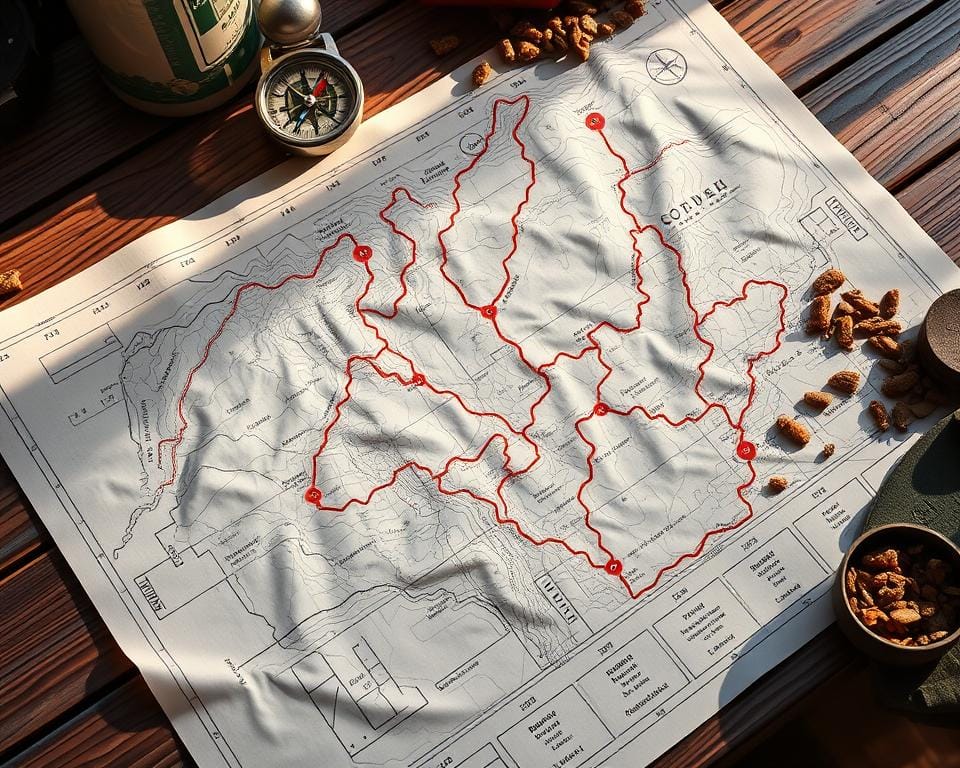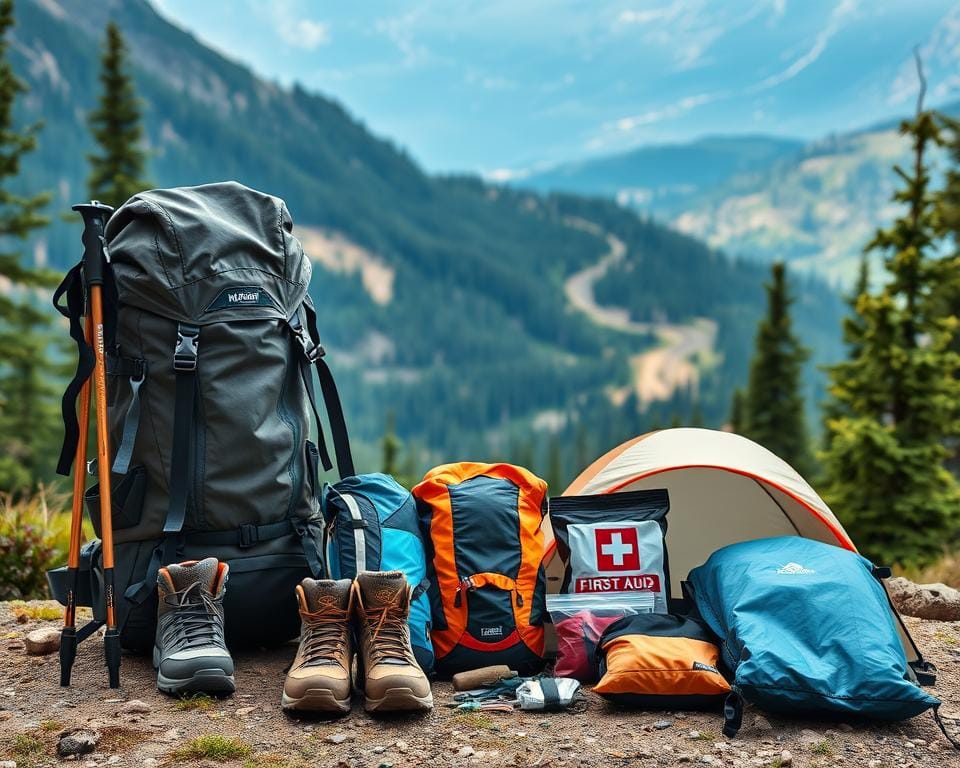Imagine waking up to mist rolling over the Yorkshire Dales, your kit packed for another day of discovery. Multi-day hiking isn’t just about distance – it’s about unlocking landscapes day-trippers never see. But here’s the rub: many adventurers stumble into their first multi-day trek assuming it’s just a longer version of their local ramble. That’s where things get interesting.
I’ve learned through trial (and plenty of errors) across the Lake District and Scottish Highlands that extended routes demand more than sturdy boots. They require a mindset shift. You’re not just managing blisters, but resupply points, weather patterns, and that sneaky 4pm energy dip when you’ve still got three miles to camp.
The good news? With the right approach, what feels daunting becomes thrilling. This guide strips away the overwhelm, sharing practical strategies I wish I’d known before my inaugural week-long trek. We’ll tackle everything from route selection that matches your fitness level to packing systems that prevent backache. No jargon, no fluff – just actionable insights from someone who’s carried a 15kg pack up enough hills to know better.
Key Takeaways
- Extended treks reveal inaccessible wilderness areas beyond day-hike ranges
- Successful trips balance physical preparation with mental resilience building
- Realistic daily distance targets prevent burnout and injury
- Modular packing systems adapt better to changing conditions
- Contingency planning turns potential disasters into manageable hiccups
Preparing for Your Multi-Day Hike Adventure
Standing at the trailhead of my first week-long trek, I realised proper groundwork separates magical adventures from miserable slogs. Your preparation determines whether you’ll remember stunning vistas or endless foot aches.
Setting Clear Goals and Expectations
Start by asking: “What makes this trip worthwhile?” For me, it’s discovering hidden valleys in Snowdonia or completing a long distance coastal path. Be specific – vague aims like “get fit” lead to frustration. If it’s your first multi-day experience, prioritise enjoyment over endurance.
Calculate daily distance targets using your regular hiking pace, then subtract 20%. Hills and packs slow you down. My Lake District trial run taught me 12-mile days feel very different with 10kg on your back!
Researching Routes and Weather Conditions
Ordnance Survey maps become your best mates here. Look beyond the trail itself – note streams for water refills and villages with shops. I always mark escape waypoints every 5 miles. Unexpected storms in the Highlands once forced me off-path – those bailout options saved the trip.
Check three weather sources minimum. Coastal paths need wind checks, while valleys demand rain prep. Pack for four seasons, even in summer. My waterproofs have baked in Cornwall sun and shielded me from Scottish hail – sometimes in the same week!
How to Plan a Multi-Day Hike
Route planning separates dream trips from logistical nightmares. The secret lies in balancing ambition with reality – a lesson I learned after underestimating the Pennine Way’s bogs. Your schedule needs breathing room for both wonder and weariness.

Organising Daily Distances and Resupply Points
Calculate walking ranges using this formula: (flat trail pace × 0.75) – (elevation gain/300). My Peak District trial proved 15-mile days with 500m climbs equal 12 miles on flat ground. Three factors dictate sustainable distances:
- Pack weight: Add 10 minutes per mile for every 5kg over 8kg
- Terrain type: Rocky paths slow progress by 20-40%
- Daylight hours: Always finish 90 minutes before sunset
Mark resupply stops every 15-20 miles. Village shops along the South West Coast Path saved me carrying six days’ food. Email campsites in advance – many hold parcels for walkers.
Creating a Detailed Itinerary and Contingency Plan
Build flexibility into your schedule. My template includes:
- Primary route with timings
- Two alternate shorter paths per day
- Emergency shelter locations
- Last bus/train times from bailout points
Share your plan with someone reliable, including:
- Grid references for nightly stops
- Check-in times
- Mountain rescue contact numbers
During a Cornish coastal storm, my backup B&B booking prevented a dangerous night in exposed terrain. Always have Plan B and C mapped – literally.
Essential Gear, Food and Footwear
Your kit choices make or break a multi-day trek. I once ditched my bulky 65-litre rucksack for a 51-litre model – suddenly, scrambling up Scafell Pike felt like freedom. Smart gear decisions keep you moving comfortably when miles stack up.
Choosing the Right Pack and Equipment
A 51-litre bag strikes the sweet spot for most 8-day routes. Bigger isn’t better – excess space tempts you to carry ‘just-in-case’ items that add weight. Prioritise these features:
- Adjustable hip belt transfers load to your legs
- Side pockets for quick water access
- Compression straps to stabilise loads
My rule? If it hasn’t earned its place in three previous trips, it stays home. Exception: safety supplies like first-aid kits and emergency shelters.
Managing Weight, Nutrition and Safety Supplies
Keep total pack weight under 18.5kg – that’s four bags of potatoes! For food, calculate 2,500-3,000 calories daily. Dehydrated meals save space, but pack familiar snacks too. My fail-safe:
- Breakfast: porridge sachets + dried fruit
- Lunch: wraps with peanut butter
- Dinner: freeze-dried curry + chocolate
Foot care’s non-negotiable. Break in boots properly – I wear new ones for 50 miles pre-trip. Merino socks prevent blisters, and always carry leukotape. Remember: happy feet mean happy hiking.
Physical and Mental Preparation for Long Trails
Staring at my trembling legs after a brutal Lake District climb, I realised peak performance requires equal parts sweat and strategy. Preparing your body and mind for consecutive days on trails isn’t about brute strength – it’s smart adaptation.

Training for Endurance and Strength
Start training 12 weeks pre-trek. Build distance gradually: 8 miles week one, adding 10% weekly. Always carry your loaded pack – my first 15kg haul taught me shoulder muscles need conditioning too. Three non-negotiable elements:
- Back-to-back walking days to mimic trail fatigue
- Stair climbs with weight for mountain ascents
- Foot toughening: soak feet in surgical spirit weekly
Strengthen key muscles through cycling and lunges. My quads stopped screaming after incorporating weighted step-ups – three sets of 20 daily. Blister prevention starts now: wear your hiking boots for short walks, gradually increasing mileage.
Building a Resilient, Positive Mindset
Mental grit keeps you moving when your body protests. Develop mantras for tough moments – mine’s “This hill makes stronger stories”. Solo hikers: curate playlists or audiobooks for motivation slumps.
Practice discomfort tolerance. Walk in rain. Miss a meal. These controlled challenges build resilience for unexpected trail pain. My coping toolkit includes:
- Mini celebrations at each checkpoint
- Visualising summit views during climbs
- Emergency Haribo stash for morale crises
Remember: every ache fades, but summit sunrises stay with you. Train your mind to outlast temporary struggles – that’s the real challenge of long trails.
Navigation, Route Options and Safety Tips
My compass once saved me from a whiteout on Helvellyn – proof that smart navigation beats blind luck. Whether you’re tackling the Pennine Way or your first multi-day adventure, mastering route-finding transforms stressful moments into confidence boosts.
Utilising Maps, Apps and Waylists
I blend digital tools with traditional skills. Ordnance Survey and AllTrails apps handle daily navigation, while Slow Ways reveals hidden trails between villages. Three essentials for tech users:
- Download GPX files for offline use
- Enable battery-saving modes
- Mark water sources and facilities
Always carry a paper map – phone screens crack, but OS Explorer sheets weather storms. Practice basic compass skills before your trip. During a Lake District downpour, my soggy phone died, but the map kept me on track.
Establishing Emergency Procedures and Backup Plans
Remote trails demand clear protocols. My kit always includes:
- Personal Locator Beacon
- Satellite communicator
- Emergency bivvy
Share your route with two contacts, including bailout points. I schedule check-ins every 24 hours – missed calls trigger alerts. For popular routes like the West Highland Way, note bothy locations. In true wilderness cases (Australia’s Larapinta Trail comes to mind), carry extra water purification tabs.
| Tool | Best For | Offline Use | Battery Life |
|---|---|---|---|
| Ordnance Survey | Detailed UK mapping | Yes | 8-10 hours |
| AllTrails | Route inspiration | Premium only | 6-8 hours |
| Komoot | Custom waylists | Yes | 5-7 hours |
| Physical Map | Emergency backup | Always | Unlimited |
Test your emergency gear before travelling. A practice run with my PLB revealed signal blackspots in Snowdonia’s valleys – knowledge that later shaped safer routes. Remember: preparation prevents panic when conditions change.
Conclusion
There’s magic in watching landscapes transform over consecutive days – secret waterfalls emerge, and dawn light paints new perspectives on familiar trails. Multi-day hiking rewards those who embrace both the challenge and the preparation behind it. Every blister nursed and map folded becomes part of your adventure’s story.
Remember: solid training gives your body the resilience to enjoy each step. Start small – local hills with a loaded pack – and build up gradually. Those weekend walks lay the foundation for week-long trips where fatigue never overshadows wonder.
New to extended routes? Team up with experienced mates or try guided hikes. My first proper multi-day adventure involved tagging along with Ramblers group – their tips saved me from countless rookie errors. Solo explorers: choose well-marked trails and share detailed itineraries.
Pack that leukotape, relish the simplicity of trail food, and embrace the odd wrong turn. What feels daunting at your desk becomes achievable mile by mile. Lace up, take that first step, and discover how moving through wild spaces reshapes your connection to the land – and yourself.

